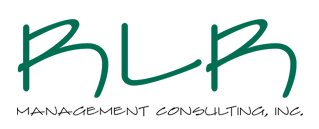The Pandemic
RLR Management Consulting, Inc.
I think we are all extremely tired of talking about COVID-19, but we must because it’s not going to go away! Remember your Pandemic Plan and FIL-25-2006 when we thought the bird flu was the next big pandemic? It was issued March 15, 2006 and states that “financial institutions should consider the impact of a pandemic and similar threats in Event Response and Contingency Strategies”. I revisited the Pandemic Response and Contingency Planning “template” RLR developed for our clients and a portion of the information remains quite useful. Specifically, I like the “wave charts” projecting the number of employees that could be impacted over a 3 to 4 month period. The bottom line is, as bankers, we have never planned for a Pandemic of this magnitude. Never!
Well, here we are and the show must go on! We cannot shut our doors while we figure this out. And for most of us, there are so many questions and so few answers. There is no crystal ball to provide guidance to the “new state of normal”.
Most bankers we’ve talked with know they need to toss their existing strategic plans and re-do them, sooner rather than later. A roadmap to deal with the next 6, 12, 18 and 24 months is critical for all of us.
I recently evaluated a financial institution and a consulting company to determine what they are doing during this unprecedented time and found several interesting items:
- State Bank Group, a $230 million asset bank headquartered in Wonder Lake, IL is a bank that has eight locations and 75 employees. Their President and CEO Michelle Toll describes her institution as “a very traditional community bank”–one that, until March, like many of its counterparts only had “a very small percentage of employees working from home periodically, no one on a regular basis.” With the onset of the coronavirus concerns, in the space of just a few days, the bank needed to rapidly move approximately 70 percent of its staff to remote working situations.
“We had to be able to quickly adapt because before that we had issued secure devices to connect remotely to probably 40 percent of the staff,” Toll says. Working in its favor, State Bank Group had developed specific pandemic and business continuity plans prior to quarantine mandates and had begun using a virtual server and desktop environment more than five years ago, implementing a more secure network infrastructure that Toll says allowed them to rapidly deploy more employee devices, test more effectively and secure disparate endpoints. “The big thing was that we were able to respond quickly with training and processes to people who had never connected remotely before,” Toll says. She adds that these new arrangements did require more employee education on heightened threats, on use of bank-issued hardware and RSA secure tokens to access the bank network.
- PwC, a consulting company, in their New York office decided to require all employees in that location to download the company’s contact tracing app onto their phones. The app is used to track people’s proximity to one another. If somebody tests positive, the company will be able to trace those that person came in contact with based on beacons placed around the office and the Bluetooth on employees’ cellphones. Within seconds, their Human Resources leader or whoever has access to that data will notify those contacts so they can get tested and areas the infected person visited could also be shut down and deep-cleaned.
We have to ask ourselves, Is this a good thing or a bad thing? How will employees feel about being tracked? Is this an invasion of privacy? Lots of questions with no clear answers at this time.
What we do know is that digital transformation, digital banking and remote access to data will in fact be necessary and perhaps mandatory as a result of COVID-19.
If you would like assistance developing a roadmap, we can help. Please contact us at info@rlrmgmt.com.
